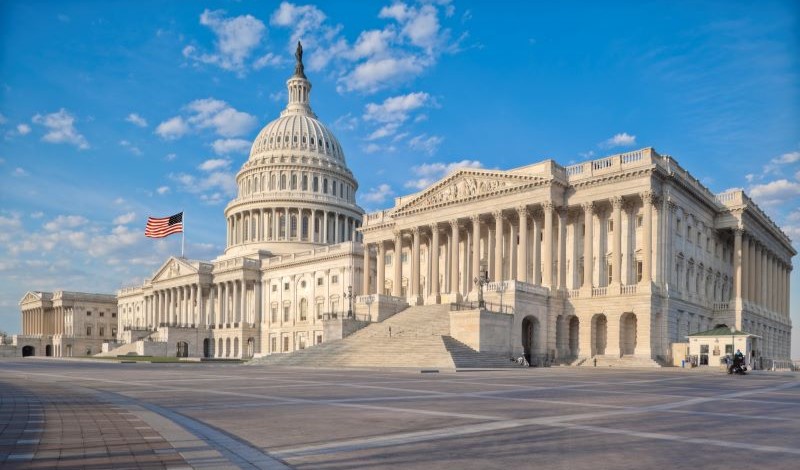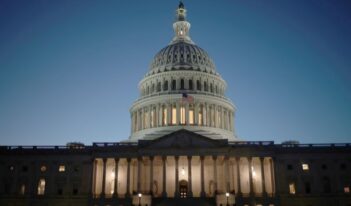
The Supreme Court validates political control over public health decisions.
Several years ago, I assigned my first-year Constitutional Law students briefs filed with the U.S. District Court for the Northern District of Texas in what was then Braidwood Management v. Becerra so they could see how constitutional claims are argued at the start of litigation. The district court was considering, among other issues, whether the U.S. Preventive Services Task Force—which, under the Patient Protection and Affordable Care Act (ACA), rates preventive care for mandatory coverage by health insurers—violates the Appointments Clause of the U.S. Constitution. The Appointments Clause requires, outside of recess appointments, that so-called principal officers be appointed by the President with the Senate’s consent but allows Congress to vest authority to appoint “inferior officers” in department heads alone.
The U.S. Department of Health and Human Services (HHS) established the Task Force as an advisory entity in 1984 to grade preventive services on a scale. The U.S. Congress codified its role in 1999, placing it within HHS’s Agency for Healthcare Research and Quality (AHRQ) and providing that the AHRQ director “shall convene” the Task Force. The ACA—which describes the Task Force as an “independent” entity and provides that its ratings “shall be independent and, to the extent practicable, not subject to political pressure”—mandates that most health insurers cover preventive services with higher grades at no cost to covered individuals.
In the summary judgment briefing I gave to my students, the government argued that the 16 volunteer members of the Task Force, who are drawn from outside the agency, are merely employees—whose ratings are made binding by the ACA, much like standards by private organizations incorporated into binding regulations—rather than officers who must be appointed in accordance with the Appointment Clause. It dropped that argument on appeal.
In late June, the U.S. Supreme Court decided Kennedy v. Braidwood Management. In a 6-3 decision, the Court in an opinion by Justice Kavanaugh reversed the U.S. Court of Appeals for the Fifth Circuit, which, in affirming the district court, had concluded that the Task Force members are “principal officers” who, under the Appointments Clause, had to be nominated by the President and confirmed by the U.S. Senate. Even though the HHS Secretary could remove the Task Force members “at will,” the Fifth Circuit found that this authority was insufficient to render them “constitutionally subordinate,” given that the Secretary could not prevent their recommendations from taking effect.
The Supreme Court took a middle path: It determined that the Task Force members are inferior officers, a position eventually advanced by both the Biden and Trump Administrations, “because their work is ‘directed and supervised’ by the Secretary of HHS, a principal officer.” Drawing directly from the Court’s prior decisions, it reasoned, that “the Secretary’s ability to direct and supervise the Task Force derives from two main sources: the Secretary’s authority to remove Task Force members at will; and the Secretary’s authority to review and block the Task Force’s recommendations before they can take effect.”
The Court stressed the historical connection between inferior officers and at-will removability by department heads and explained how removability allows the Secretary “to supervise and direct” Task Force members. Drawing on its 2020 decision in Collins v. Yellin, where it determined that removal protections did not extend to an “acting” director of the “independent” Federal Housing Finance Agency, the Court rejected the plaintiffs’ call to read removability protection into the ACA’s restriction that the Task Force and its recommendations remain “independent.”
The Court also detailed how “the Secretary can block a Task Force recommendation from taking effect by combining his at-will removal authority with his authority to determine when Task Force recommendations become binding.” Because insurers do not have to cover the Task Force’s recommendations for at least a year, the Court found that the Secretary could request that the Task Force reconsider a rating during that period, along with firing members who disagree.
The Court again refused to read into “independent” what the plaintiff argued for–a complete bar on the Secretary’s involvement. Pointing to the connected phrase—“to the extent practicable, not subject to political pressure”—the Court determined that some political supervision was permitted, similar to how administrative law judges’ or Patent Trial and Appeal Board judges’ decisions are reviewed by political appointees after an independent determination. In addition, the Court concluded that even if the Secretary lacked the power to compel a particular recommendation, that would not disturb the inferior officer status of Task Force members, citing its decision in Free Enterprise Fund v. Public Company Accounting Oversight Board, where it acknowledged that the “Securities and Exchange Commission lacked the power to require the Public Company Accounting Oversight Board to ‘start’ individual investigations.”
At oral argument, most of the Court’s justices seemed convinced that Task Force members are inferior officers, focusing instead on whether the U.S. Congress had explicitly chosen one of the Appointment Clause’s specified alternatives to presidential appointment with Senate confirmation, here vesting their appointment in the HHS Secretary, and later asking for additional briefing on the vesting question. Three dissenting justices—in an opinion by Justice Thomas that is nearly as long as the majority’s—would have remanded the issue to the lower court, which had not ruled on it, or in the alternative resolved it—negatively—before turning to the constitutional status of the Task Force members.
The majority, by contrast, ruled on the vesting issue after determining the inferior office status of the Task Force, finding that “Congress has, in two steps, expressly vested the Secretary of HHS with the authority to appoint Task Force members.” To start, Congress codified the Task Force in 1999, authorizing the AHRQ’s Director to appoint task force members. Second, HHS’s 1966 reorganization plan transferred the “AHRQ Director’s functions to the Secretary.” This transfer, the Court concluded, meant that “in 1999, when Congress gave the AHRQ Director the authority to appoint Task Force members, that authority vested in the Secretary.”
For its first step, the Court interpreted the mandate on the AHRQ head to “convene” the Task Force to include the power to appoint its members. It also pointed to longstanding executive branch practice of appointing under the convening mandate, notably citing its decision in Loper Bright Enterprises v. Raimondo. Only in 2010, when the ACA was enacted, did the Secretary need to appoint Task Force members—though the Secretary did not do so until this litigation—so in its second step, the Court relied on HHS’s 1996 Reorganization Plan to provide that authority, finding that its transfer of the authority of the AHRQ’s head to the Secretary includes selecting the Task Force.
The dissent, in contrast, interpreted “convene” to not include appointment power and then determined that, even if “convene” allows for appointment, the Reorganization Plan did not move that power to the Secretary as it is not a “function.”
Stepping back from the specifics of the litigation, the dissent offered concern or celebration for the Appointments Clause maven. On the smaller side, the dissent suggested in a footnote that Congress could not vest appointment authority of executive officers in a court of law (one of the Clause’s three alternative options for inferior offices), which the Court upheld in Morrison v. Olson, calling into question whether “such inter-branch appointments are consistent with the original understanding of the separation of powers.” On the larger end, the dissent argued that “appointment authority … cannot be deemed implicit in a more general grant of authority to a department head.” But while the traditional Senate-confirmation process churns, agency heads often delegate nonexclusive functions of vacant positions downward, arguably creating inferior offices in some cases, through broader authorities given by Congress. We have seen conflict over court selections of interim U.S. attorneys in recent days.
After the district court released its decision in this litigation, my colleague Michelle Mello and I worried that its “reasoning would essentially bar the government from using any expert committee that operates independently in making binding recommendations and whose members are independently appointed.” Although the Supreme Court disagreed with the district court’s—and Fifth Circuit’s—reasoning that Task Force members were sufficiently independent to require presidential appointment with Senate confirmation, it did so by undermining the very independence of public health experts. To find Task Force members inferior officers, it had to read the statutory framework to give political officials sufficient control over the Task Force. After Braidwood Management, the HHS Secretary could refuse to adopt the Task Force’s recommendations, fire its members, and appoint new members with questionable qualifications without any Senate check, as he did several weeks before this Supreme Court decision with the Advisory Committee on Immunization Practices. Indeed, the HHS Secretary has already canceled a meeting of the Task Force after the Court’s decision was handed down.
There is some irony in the majority’s discussion of independence. The Court remarked that “when Congress wants to create an independent agency, it generally does so by explicitly conferring for-cause removal protection on the agency’s leadership”—protections that presumably will not survive much longer.
After listening to the oral argument and reading over 80 pages of opinions, advocates can draw a final lesson. Sometimes, you can go so far that you lose even those who agree with your bottom line. At oral argument, Braidwood suggested that Task Force members are “more powerful than the Secretary of HHS or the President.” It also argued that anyone could choose the members of the Task Force. The dissent did not advance either claim, and the majority scoffed at them.
This essay is part of a series, titled “The Supreme Court’s 2024-2025 Regulatory Term.”




